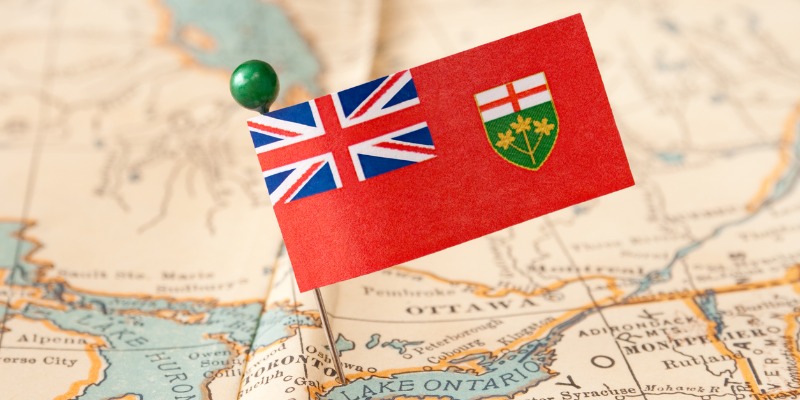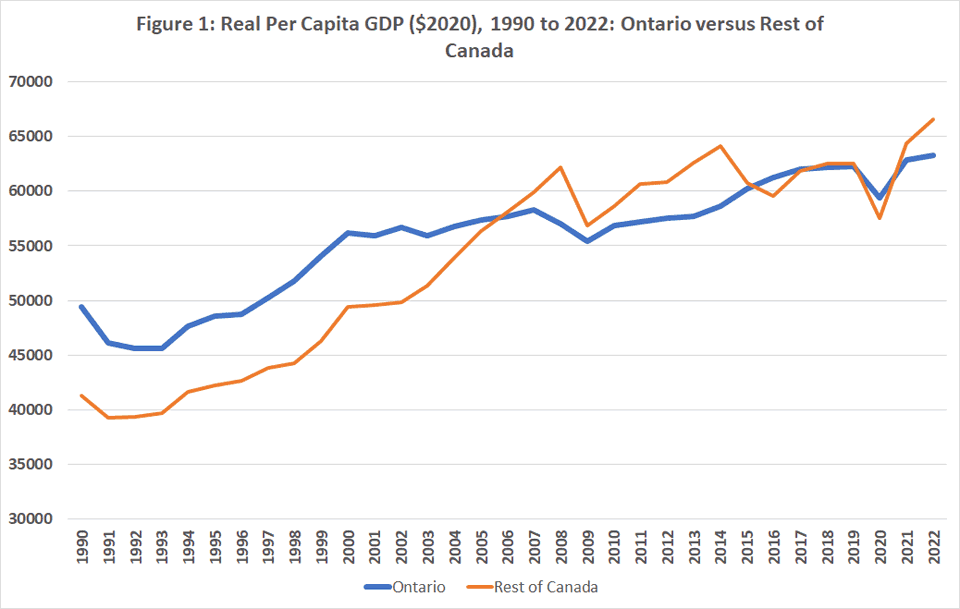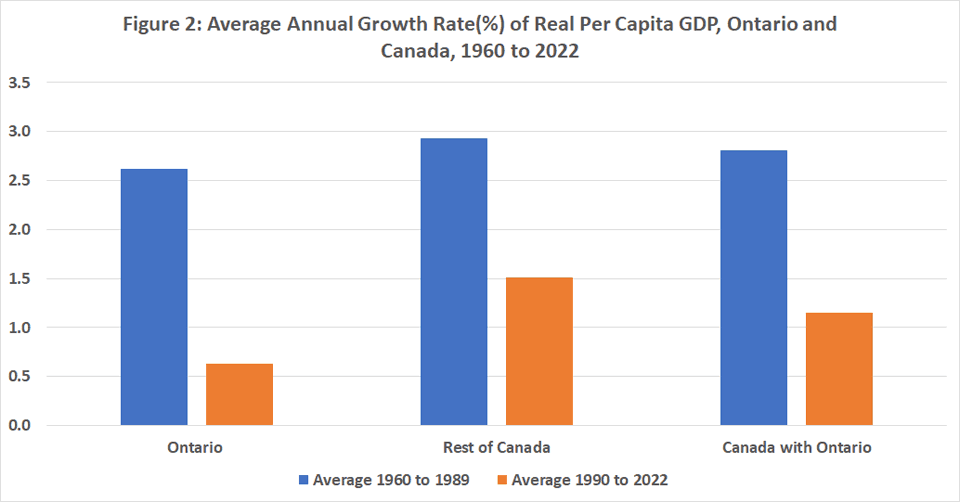Ontario’s economic decline is real and substantial

A spectre is stalking Ontario, and it’s the spectre of decline. For most of post-war Canadian economic history, Ontario has had a per-capita real GDP substantially above the Canadian average. At the same time, Ontario has had real per-capita GDP growth relatively close to the Canadian average.
This dominance was rooted in Ontario’s role as Canada’s industrial heartland that developed in the wake of Confederation. Ontario was indeed a beneficiary of Canada’s national economic development policies based on development of the Canadian prairie wheat economy, a tariff wall to protect domestic manufacturing and an east-west railway transport corridor. At the same time, Ontario’s economy was also marked by prosperity driven by market-based economic development best described in the words of economic historian Ian Drummond as “progress without planning.”
Ontario’s performance can be summarized in two charts using data from the Macro-data Base of Finances of the Nation. The first chart below plots real per-capita GDP separately for Ontario versus the rest of the country (Canada without Ontario) from 1990 to 2022.

The second chart plots the average annual growth rate for Ontario, the rest of the country and all of Canada for the 1990 to 2022 period and the approximately 30-year period preceding it. The evidence suggests that during the 1990s, Ontario fell dramatically below the rest of the country in terms of its real per-capita GDP growth. In 2006, the rest of the country surpassed Ontario’s real per-capita GDP and remained higher for a decade before converging from about 2015 to the pandemic era. However, in the immediate post-pandemic era, Ontario has once again fallen behind the rest of the country.

During the 30-year period prior to 1990, Ontario’s real GDP per-capita growth was quite close to the overall Canadian average and that of Canada without Ontario. What’s remarkable is what’s happened since.
Ontario’s average annual growth rate of real per-capita GDP fell from 2.6 per cent to 0.6 per cent. To be fair, a productivity decline has also marked the rest of the country. Indeed, Ontario and the rest of Canada appear locked as partners in a long-term productivity and growth decline, but Ontario’s performance is both dire and unique. The rest of Canada since 1990 saw its per-capita income growth rate cut in half. While hardly a sterling performance, compared to Ontario it was a veritable boom given that Ontario’s post-1990 average annual growth rate was barely one-quarter that of its 1960 to 1990 growth rate. One can argue that Ontario is dragging down the overall Canadian growth rate.
One can construct all kinds of palatable and soothing stories to explain why this has happened and why it’s not as unflattering as these statistics suggest. For example, one can argue that convergence of income is a good thing as it provides for a more economically balanced federation and is a logical outcome of economic development spreading across the country. At the same time, convergence could also mean that once per-capita incomes have equalized, growth rates should be similar, too, which is not the case here.
One could argue that Ontario was exceptionally hard hit by the economic adjustment its manufacturing base underwent during the 1990s in the wake of the 1998 Canada-U.S. Free Trade agreement and then NAFTA. Yet most of that adjustment was done in the 1990s and a breakdown of growth rates in the 1990 to 2022 period shows 1990 to 2000 had higher per-capita income growth than afterwards. One could also argue that the real per-capita slowdown is an illusion fuelled by rapid population growth. This of course ignores the reality that Ontario’s population has been growing about the same as the rest of the country and its share of total Canadian population today remains pretty much the same as 30 years ago.
Another potential argument is that the relatively better performance of the rest of the country is the result of natural resources with Alberta, Saskatchewan and Newfoundland and Labrador doing much of the heavy lifting. Yet this ignores that Ontario, and especially its north, is resource rich with abundant minerals and hydropower resources. Yet Ontario has been planning for more than two decades to access its Ring of Fire and little yet emerged. If the early 20th century could be characterized as “Progress without planning” then the early 21st may as well be “Planning without progress.”
Finally, one could argue it’s all just a rough patch for Ontario and that things are about to turn around. At the 1960 to 1990 growth rate, Ontario’s per-capita income would double in about 30 years. At the post-1990 average annual growth rate, the next doubling will take more than a century.
These are all ultimately unconvincing stories strung together to provide a comforting and bearable account as to why we shouldn’t worry and indeed shouldn’t do anything at all. Yet the first step to a solution is acknowledging a problem exists. Unfortunately, Ontario seems serene in the confidence it does not have to worry. Ontario needs to wake up and realize it has a problem.
Author:
Subscribe to the Fraser Institute
Get the latest news from the Fraser Institute on the latest research studies, news and events.

